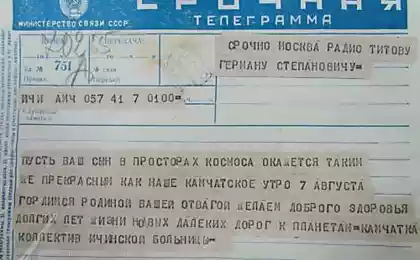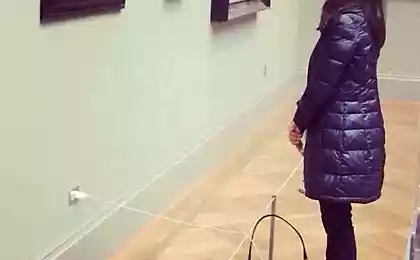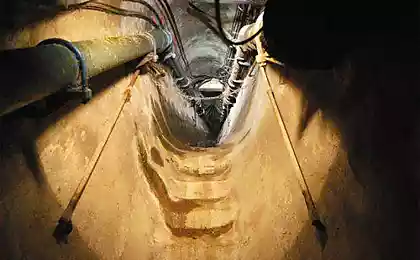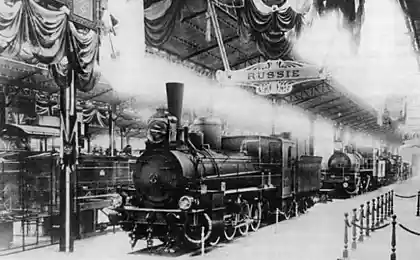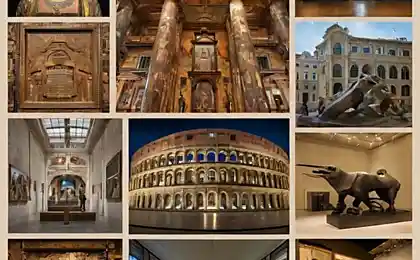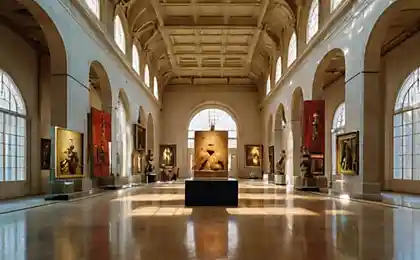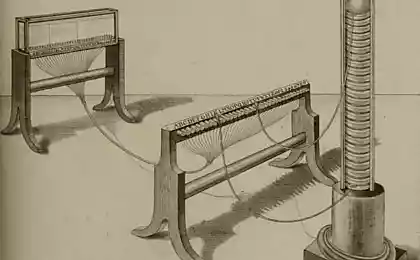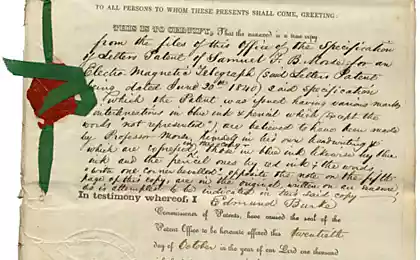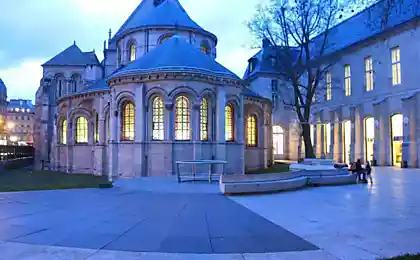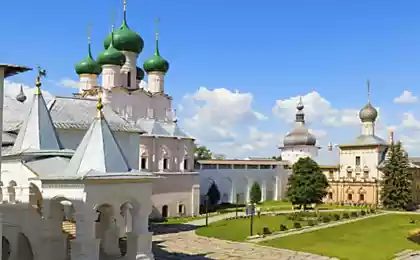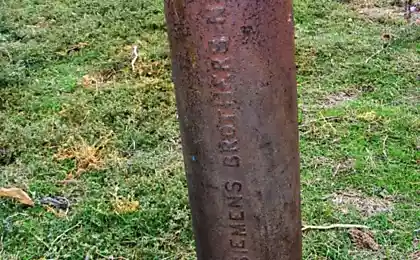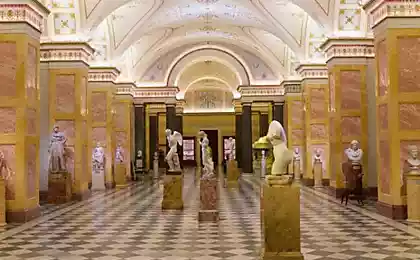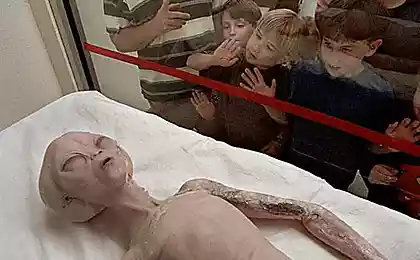2354
Photo excursion to the Museum of the Central Telegraph

At the invitation of Albert Valiullina, Director of Marketing coworking DI Telegraph , visited one of the most secret places of Moscow, which is still untouched by the blogger. Right sorry for the pictures - shot on a matchbox, but the exhibits were worth it!
Before talking about the Telegraph, the following conditions that we are talking about Retrocomputing. All human invention is essentially trivial: the atomic bomb or rocket to the moon - self-evident at the level of ideas. In the end, the steam engine was known since antiquity. But here is to actually build a locomotive, need five hundred years of engineering culture.
Same parsley with computers. Personalka with internet needed a man always, and every culture to solve this problem on its own. For example, the Library of Alexandria - quite a Wikipedia and "Internet on the scrolls." And what is a university? In fact - Retrocomputing where students independently dig data write term papers and paint presentation. Only one component of the computer occupies a separate building.
In Moscow, there is a whole class of such buildings functions.
Here, for example, a house - the hard drive.
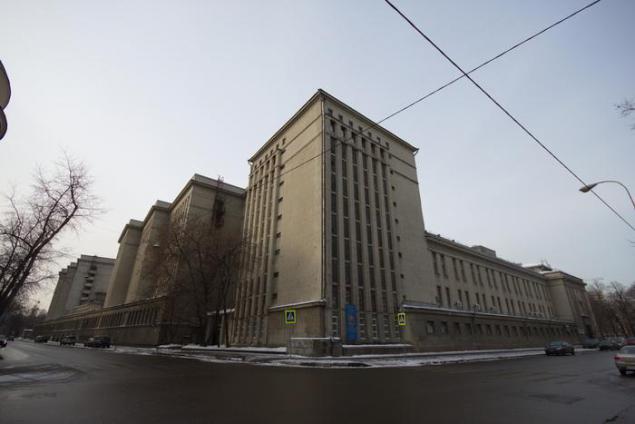
Central Archive of Ancient Documents at the Pirogov.
That house internet.
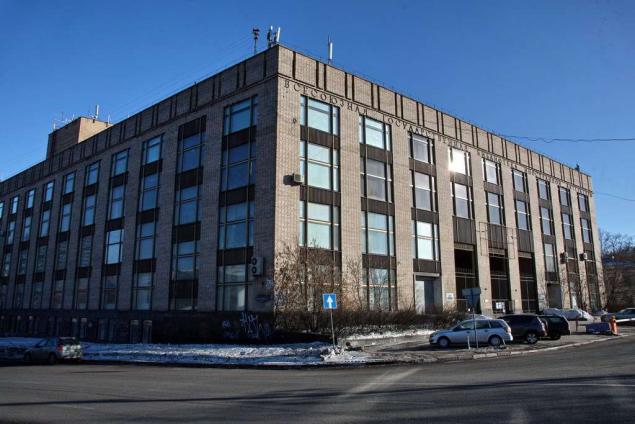
All-Union Library of Foreign Literature on Nikoloyamskaya.
And here - the video card is overheating.
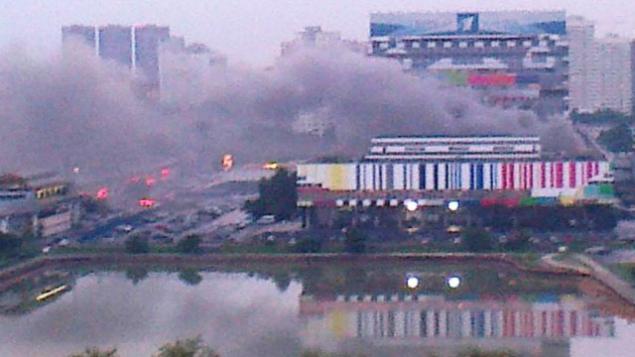
A fire in the Ostankino television center in 2013.
Apart in this series is a house-modem or home router if you want.
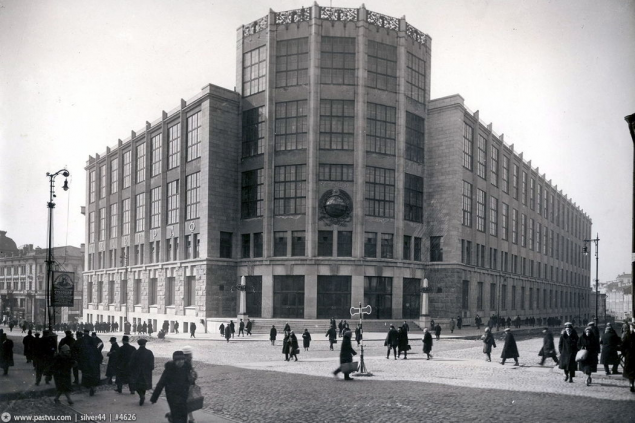
Central Telegraph - Telegraph is the oldest in the world (!). Build it a modern building with a maximum scale socialist, that is extremely efficient and the latest technology. Besides, it was built before the revolution captured spices. The result was a communal house with a closed ecosystem - except for computer rooms are spacious and had all of their own, from the forges to kindergarten for two hundred people.
Or here balconies, have you ever wondered where they are at the technical building?

And the building was 20 apartments for the bosses, and the director of the telegraph had its own elevator - from the apartment immediately "on production».
The talented Russian engineer, Ilya Rerberg, designed the building with the latest technology. Together with Shukhov Rerberg became a pioneer in the use of monolithic reinforced concrete frames - Their use allows to completely abandon the walls in favor of panoramic windows. A strength designs Always load with the stock (for example, the telegraph was built with the ability to complete two more floors. What was planned to make the 1980th, but calculations showed that, for the needs of the Olympics will need to double the available space - so there is a new building of the telegraph).
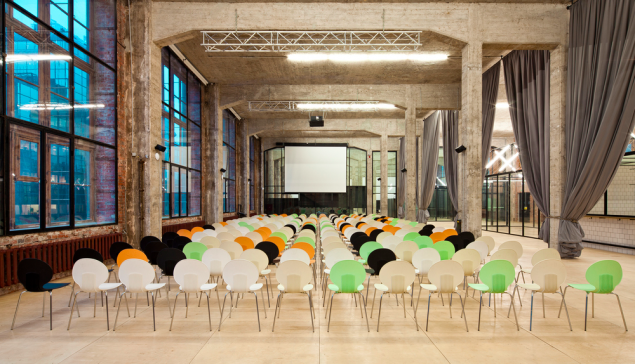
Even now Telegraph continues to perform its functions as a central hub of all kinds of communication of Moscow. Progress clean machine rooms, turning them into restaurants, offices and coworking huge, but the Central Telegraph is still a strategic object, get a room which can only with permission of the Director.
So I went on a visit to the Museum Director of the Central Telegraph - Vladimir Zukor. I must say that never before met a man so obsessed with his work. I spent five hours in the museum, and it was evident that one can spend a whole month. At the same time to get to the museum from the street is simply impossible. And see that there is.
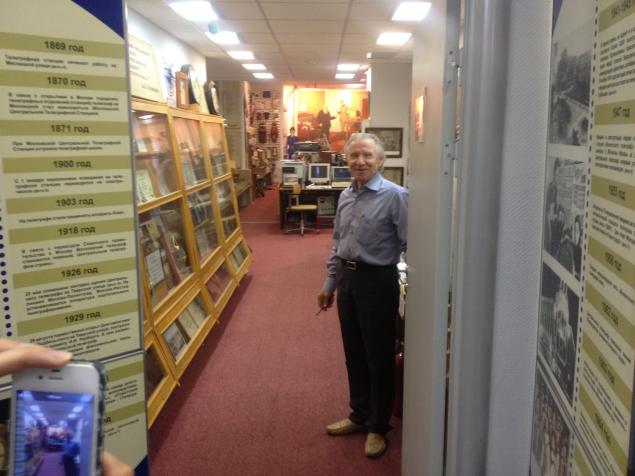
Actually it's not quite a museum, rather a collection, all the exhibits in it - acting. Museum staff quite seriously set themselves to collect all known existing models of communication devices. And it is very successful in this.
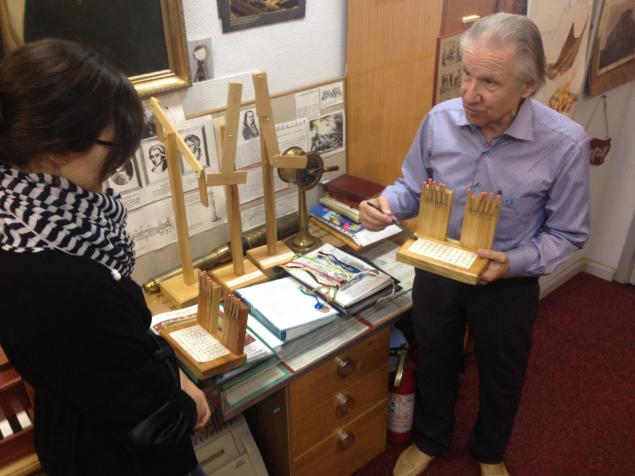
Here is the first extant Telegraph - flare device of ancient Greece. Torches networked and send a message to the chain - from the military frontier in the capital.
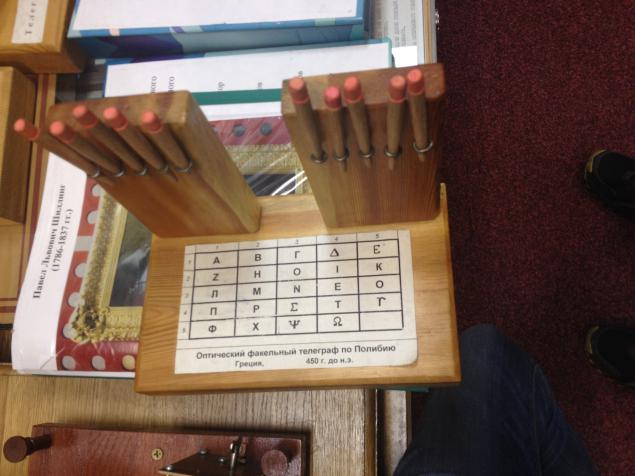
The device, as you can see, is quite simple - ten torches specify the row and column in the code table.
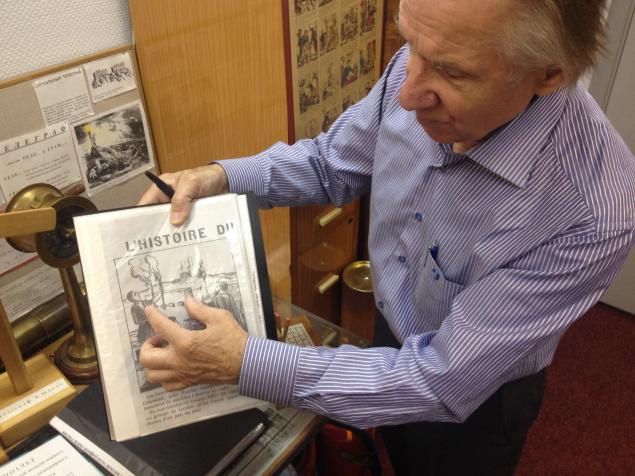
Here's how it looked in practice.
After antiquity came the dark Middle Ages, people and religion has replaced the need for communication. It was not until 1792, when Claude Chappe created a system of optical telegraph.

Code table contains as many as 77 characters.
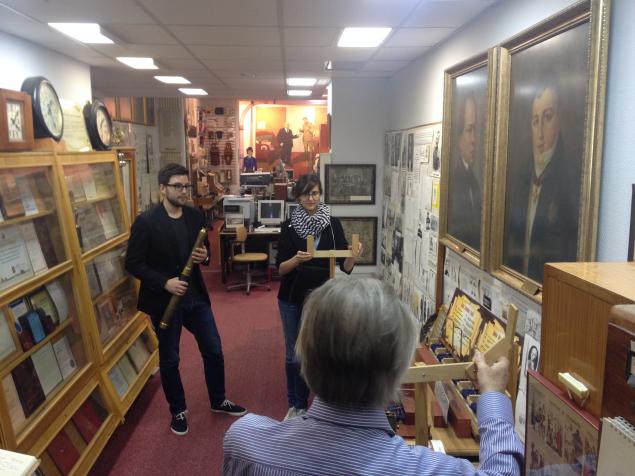
Speed - 2 words per minute. We've got a few less.
When I said that I worked in the museum fans of the business, it is not exaggerated - they know by the name of each station and telegraph felt even speed signal in all directions. This speed of communication, for example, allow Napoleon to have a decided advantage over the enemy and won several victories.
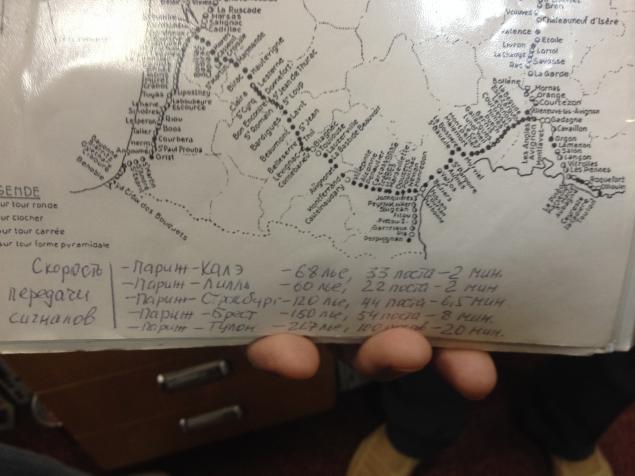
Not a bad story is connected with the advent of the telegraph in Russia. V1824 was constructed link from the Winter Palace in Kronstadt. In this technology significantly improved. Firstly, telegraph can now operate at night, and secondly, makes it much faster due to simplify the code.
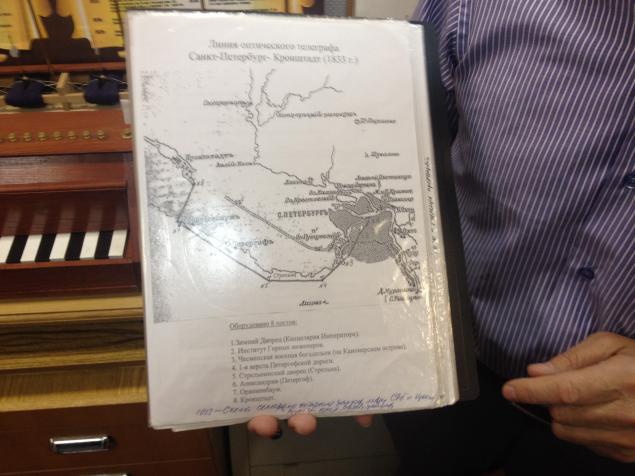
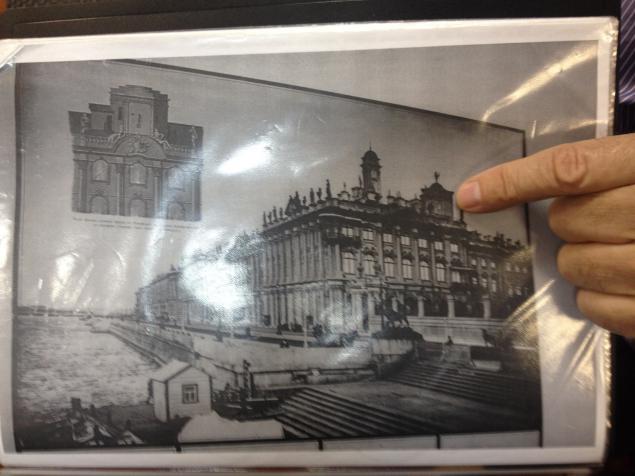
On the roof of the Winter you can still see the tower of the optical transmitter.
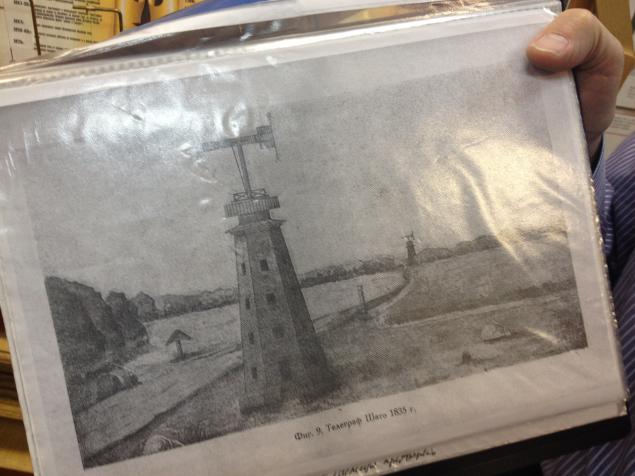
For the construction in Russia chose optical telegraph, developed by the former employee of K. Chappe - engineer Jacques Chateau (in Russia it is called Peter). The design of his telegraph much simpler than Chappe: for visual transmission used only one "semaphore Rod", reminiscent of the T-shaped arrow, which ends at three in the dark lit lanterns. "Arrow" can rotate and take eight different fixed positions. These combinations are encoded individual letters, numbers and whole phrases.
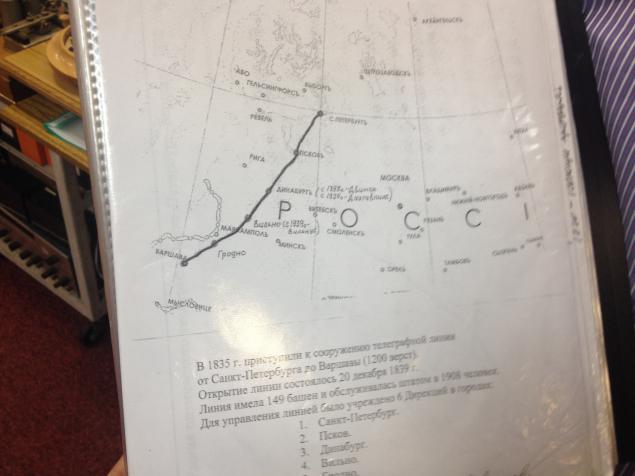
At intermediate stations Towers, in a special "signalist" recorded all received and transmitted on the signals with the time of transmission and the surname. In this case only recorded numerous provisions semaphore rod (in the form of a sequence of pictures). Telegrapher transmission simply repeating the position of the bar on his tower, replicating the position of the bar transmission tower, which he saw in the telescope. The content of the message he did not know.
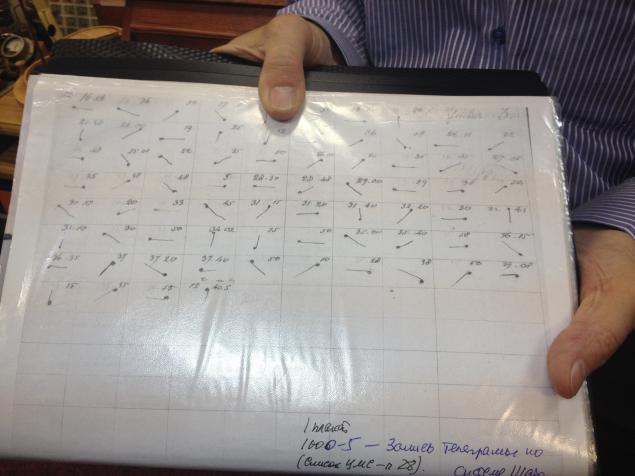
However, the "mischief" quickly ended, in 1832, the St. Petersburg engineer Pavel Shilling demonstrates the world's first electric telegraph. Too zamorochennaya design that has not become widespread.
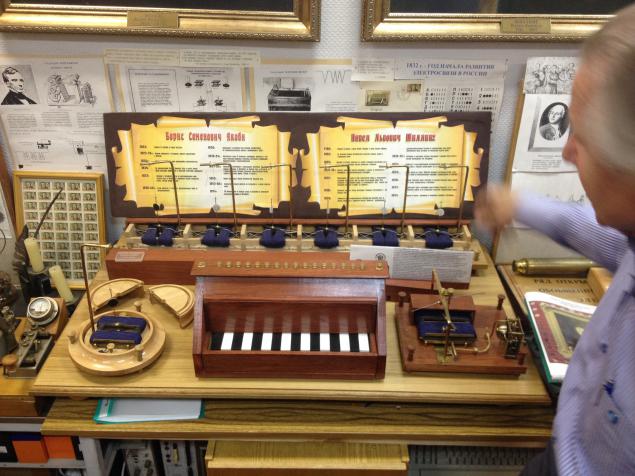
Coils of copper wire through magnetism turning circle in one of three positions - white, black and rib.
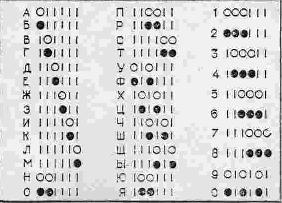
The operator at the other end of the line checked the turn indicators and decrypts the message. Six coils, one keyboard, plus a bonus reel right.
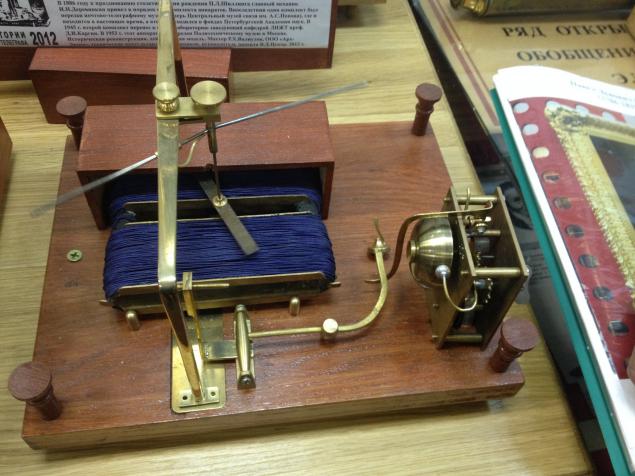
She was the most important, because it gave the call, alert the operator that it is time to return to the place and start receiving telegrams.
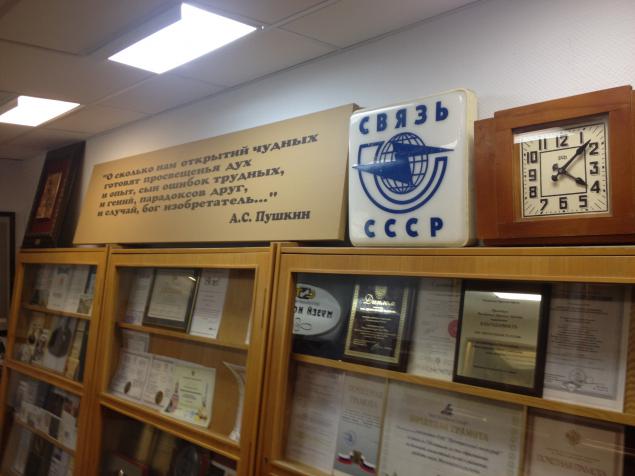
They say these lines Pushkin dedicated to his friend Schilling, implying his telegraph.

All of the above in the form of comics.
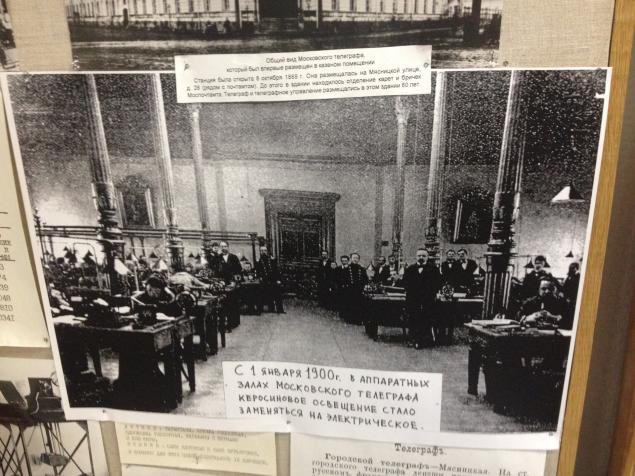
The twentieth century began.
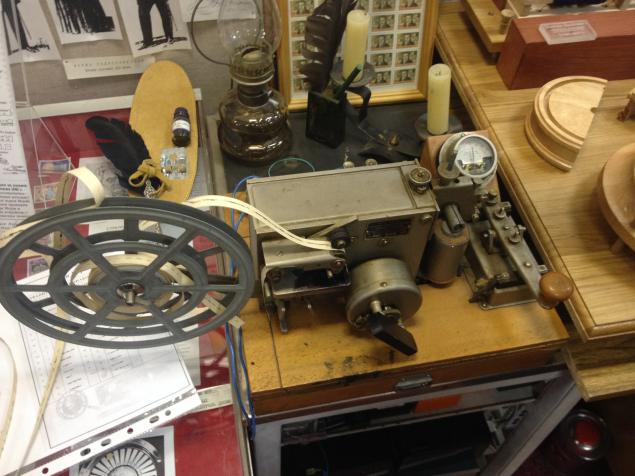
The good old Morse code. Curiously, he was an artist and Morse knew nothing about electronics. His inspiration for the invention of the telegraph casual conversation while returning from Europe on a steamer in 1832. Some passengers in a conversation about the recently invented electromagnet said: "If the electric current can be made visible at both ends of the wire, then I do not see any reason why the messages can not be transmitted to them." Although the idea was put forward and the electric telegraph to Morse, he believed that was the first.
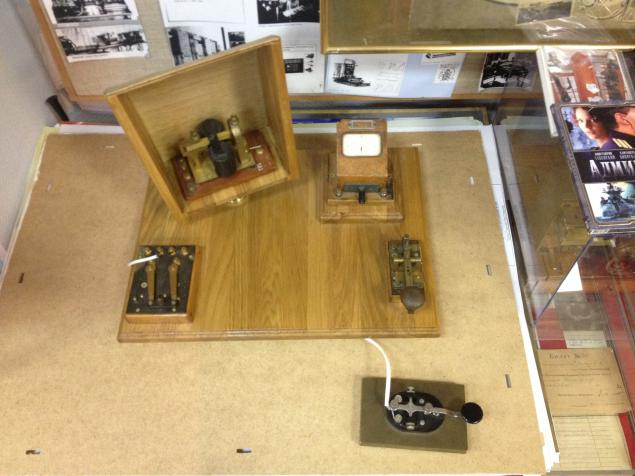
Years of work and study required to be earned Telegraph. In 1837, he developed a system for transmitting letters dots and dashes, which has become known worldwide as Morse code. He did not find any support at home in the US or Britain or France or Russia, meeting everywhere refusal. Only in 1843, found a patron, has invested in the start-Morse $ 30,000, well, then you know.
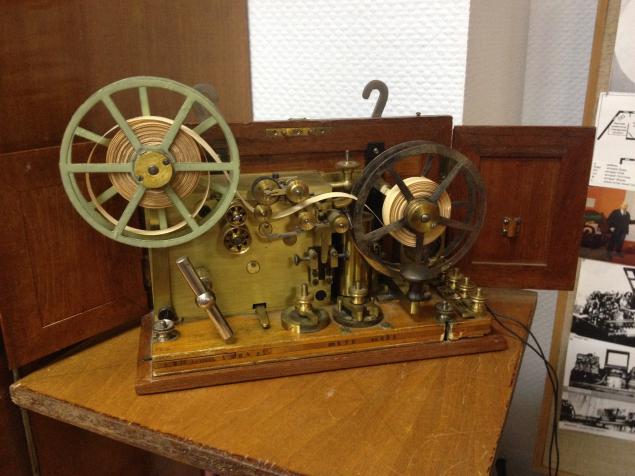
Field device Morse, 1904 release in a neat folding cases.
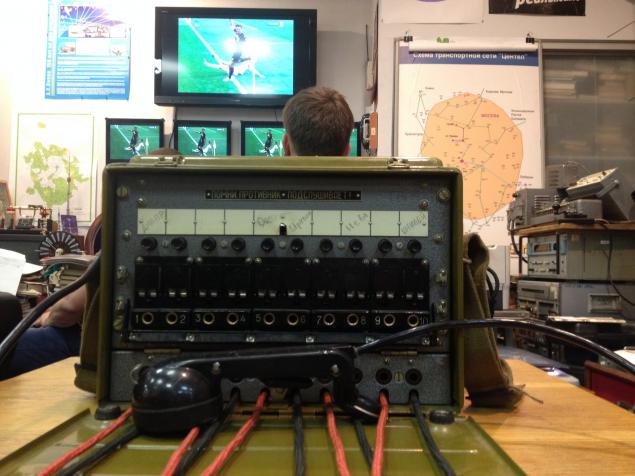
Interactive amusement of four field radios. The photo is visible field switch, unfortunately, do not remember the model.

Everything, absolutely everything, the inner space of the museum employs vintage gadgets, which you can drool forever - all working and connected to all possible networks.
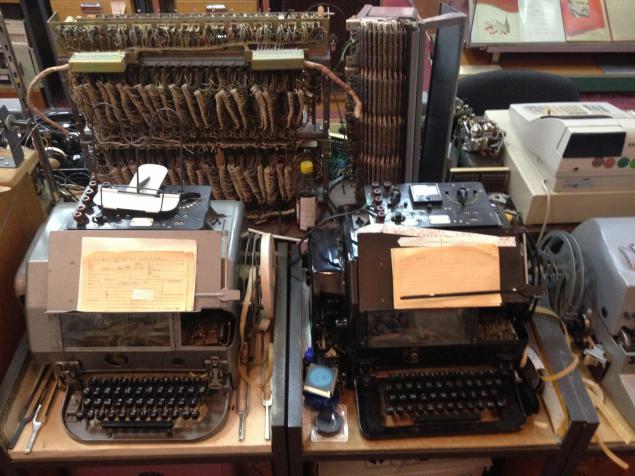
That telex. Behind them mechanical PBX.
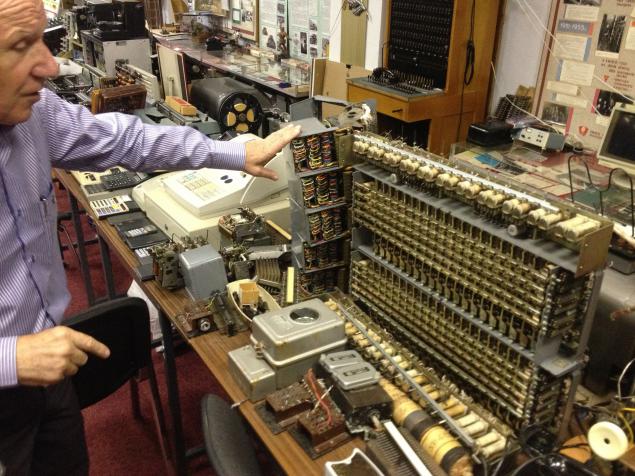
All blurry and debugged, connected and running!
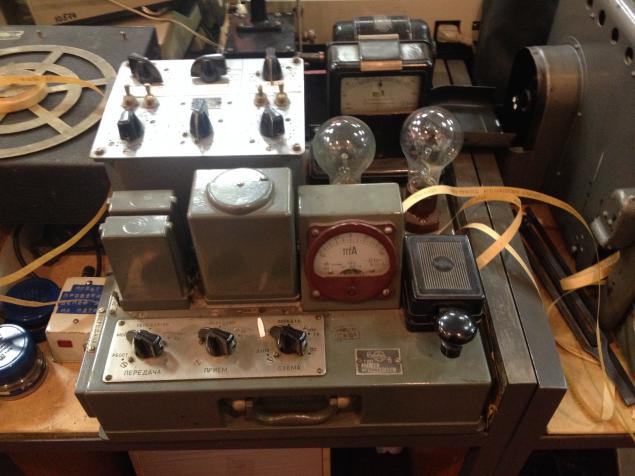
Steampunk
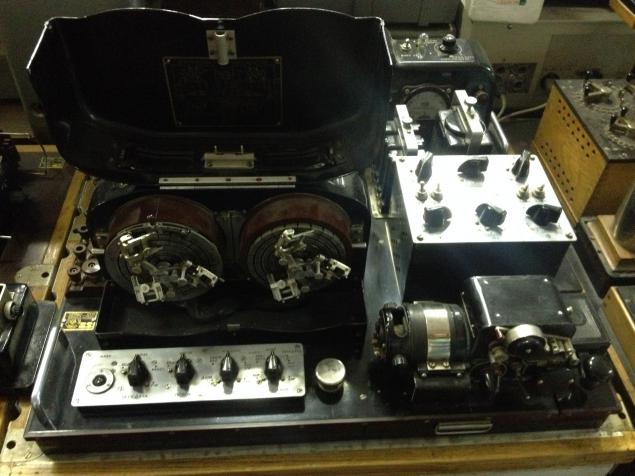
And it's a great device Bodo French. You see two drums? According to him constantly, and very quickly, and rotate the brush, pressing keys on the keyboard, brushes close the circuit.
At the same keyboards and operators can be as much as six, and they all work together - everyone has a turnover of brushes in the general cycle. Here's a time-sharing system in its natural form. However, this machine require extremely precise timing. That's when synchronization becomes a key problem in telecommunications.
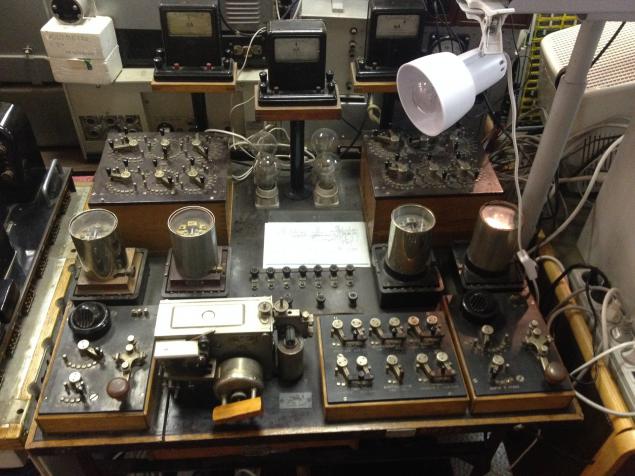
That's what I call a serious user interface.
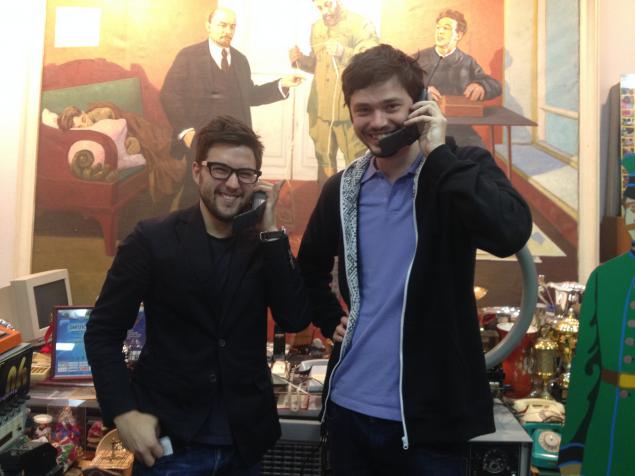
A separate table is a tear of emotion history of cell phones.
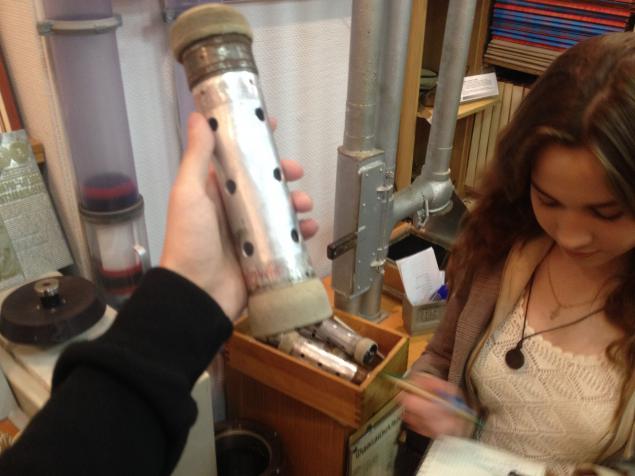
Where do without acting pneumatic?
Now it's time to take a short break and visit the attic of the telegraph and its famous clock with a bell!
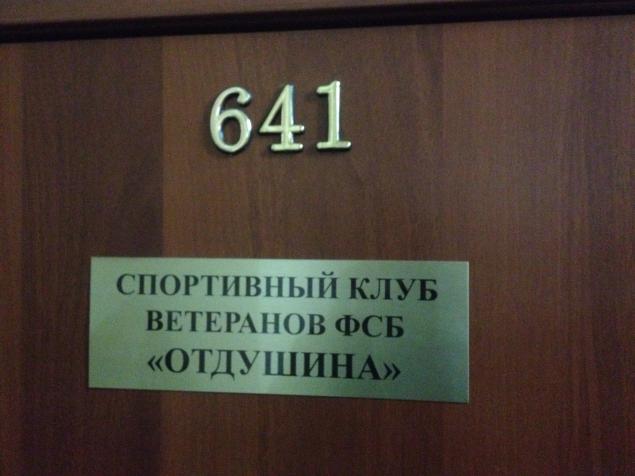
Sensitive sites.
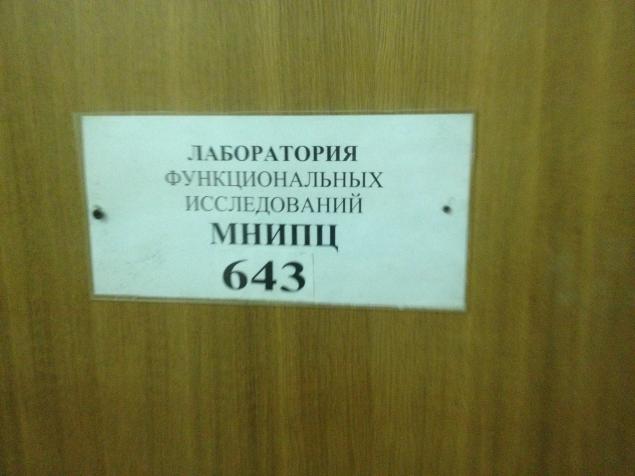
Under the guise of this could be anything.
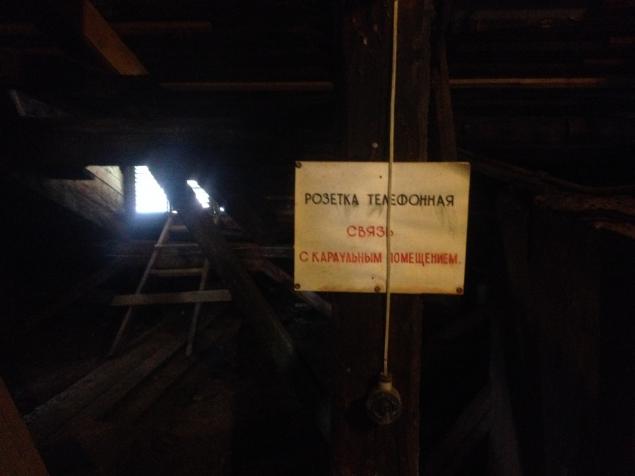
It seems that all the employees were carrying telephones?
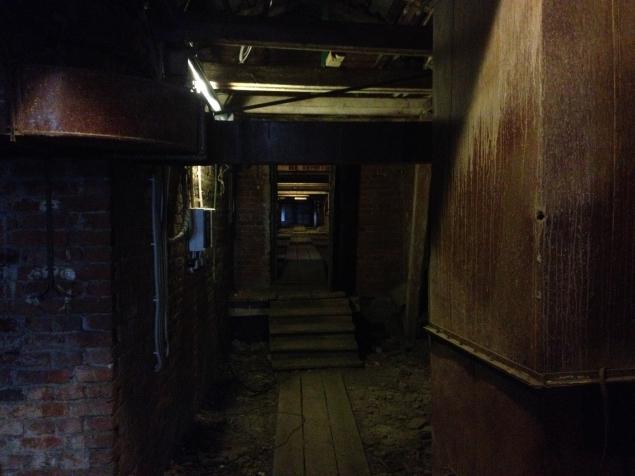
Attic through the entire building, quite simply lost.
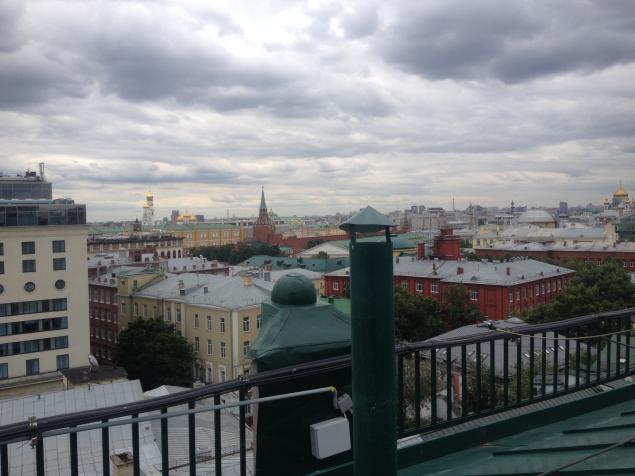
View of the Kremlin.
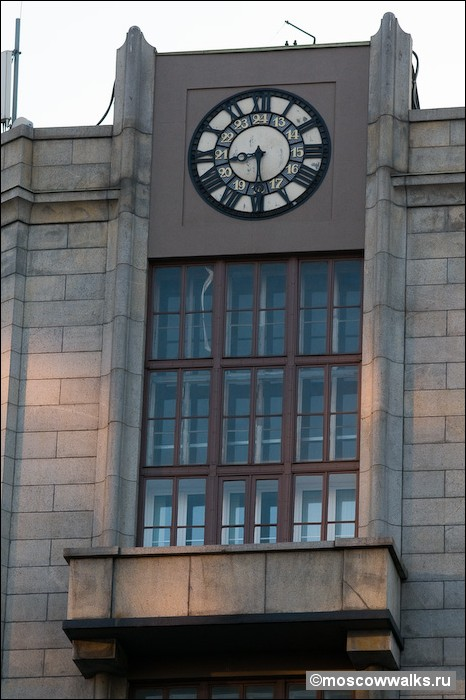
Hours Telegraph - one of the oldest in Moscow. Nobody knows exactly when they are made, but just before the 20th century.
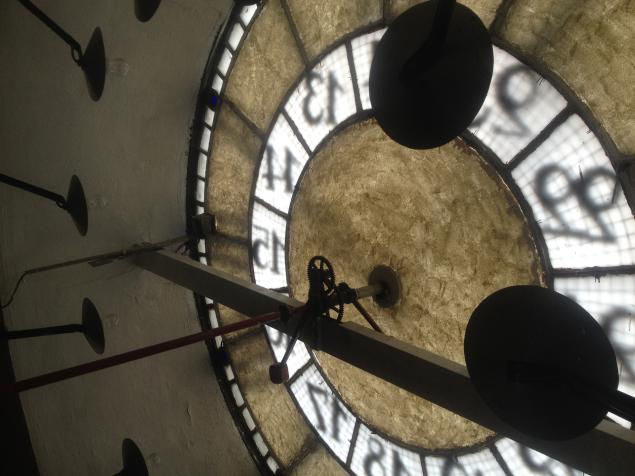
Wrong side of the dial.
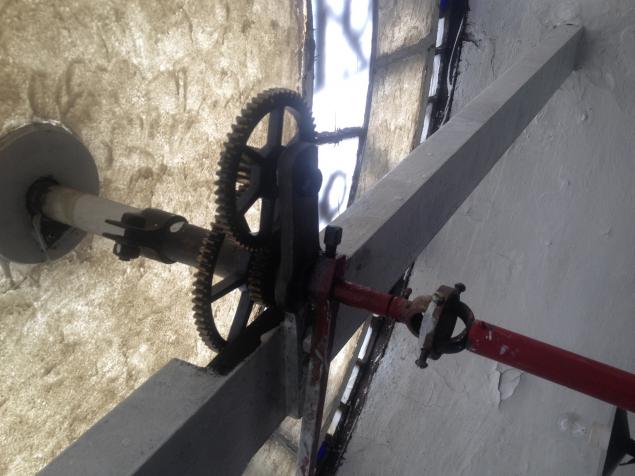
The shaft rotates the minute hand, and the three gears convert minutes into hours.
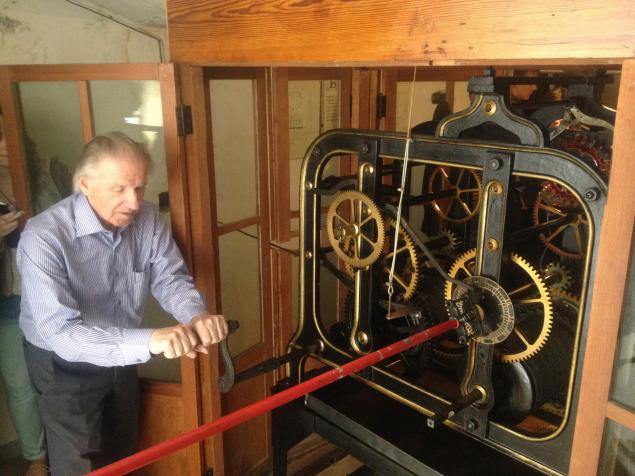
Winding is not easy - you need to pick up two weights of 19 kg, hidden in the walls. But the plant lasts for a week.
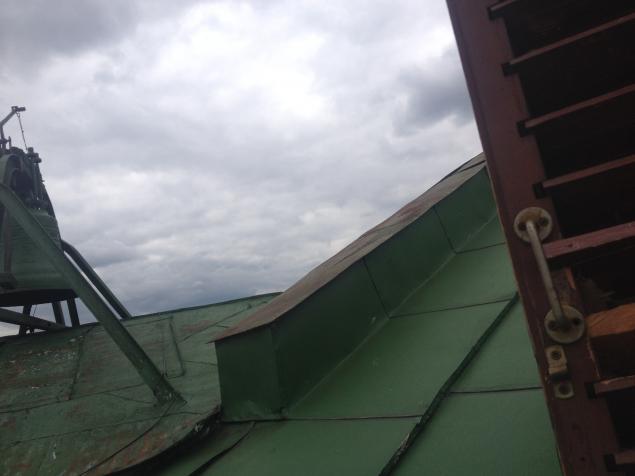
This can not be done, but I got out of the window sfotkat bell at arm's length (unfortunately unsuccessfully) - say residents of neighboring houses were asked in 1930 to make it quieter, and since very few people even know that every hour over Tver hear chime. Anyway, who knows that in the very beginning of Tverskaya street stands a bell?
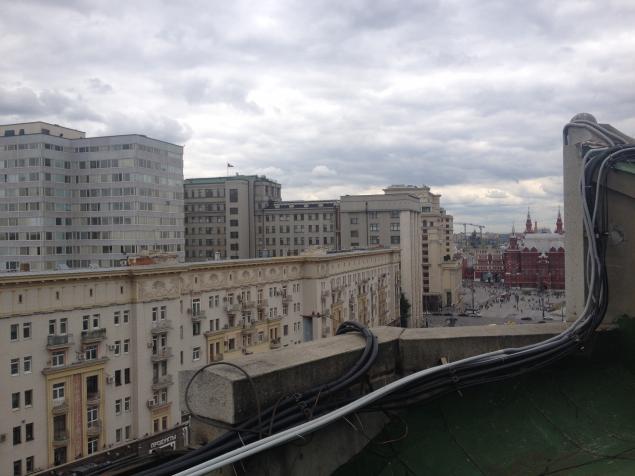
Interesting view on Tverskaya.
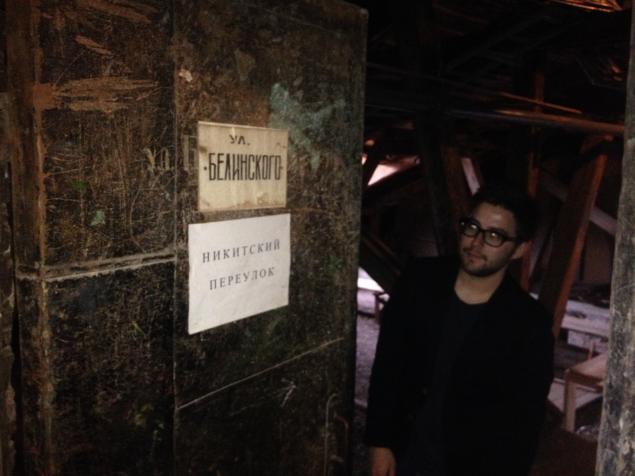
Inside the loft only navigation - Name lanes.
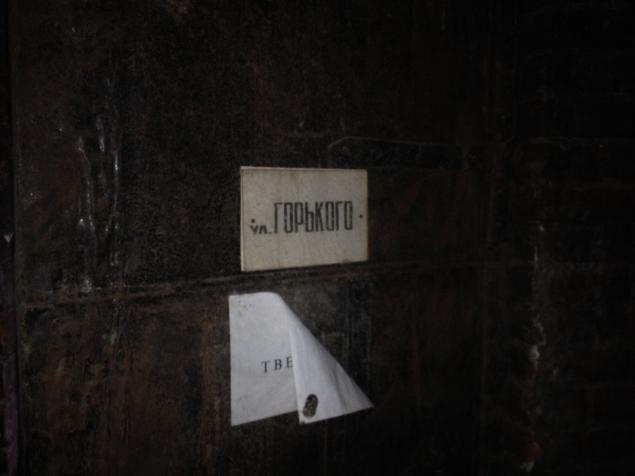
Smell time.
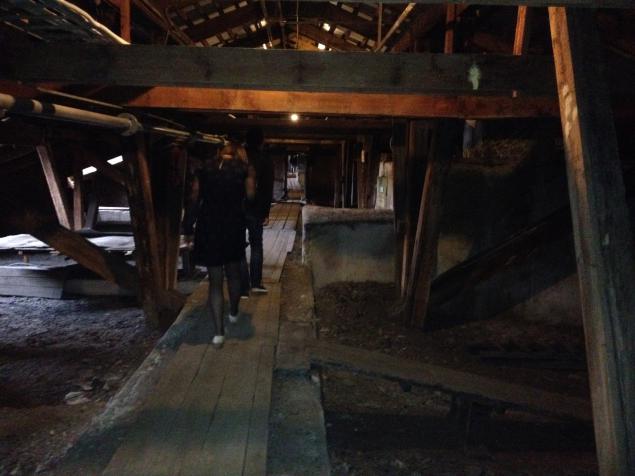
And just the most beautiful loft in Moscow.
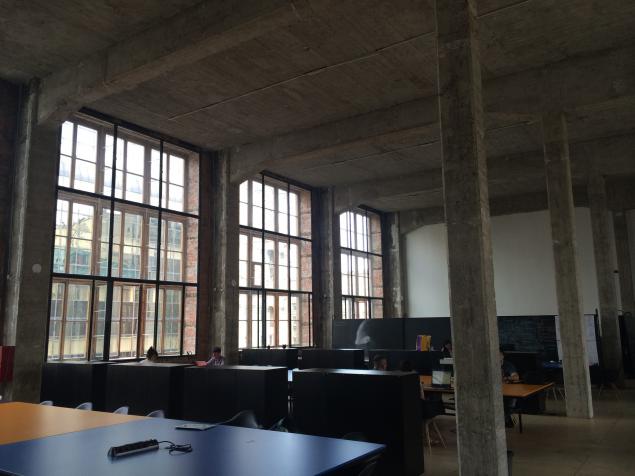
We Spuckalis down through coworking DI Telegraph . It occupies one of the computer rooms on the fifth floor - a fantastically spacious place virtually without walls - some windows. Do not even know what to compare. Light floors and industrial design of the last century created the overall impression that you are in New York.
Today it holds a conference ebay, but generally there like this (pictures from the site ditelegraph.com/spaces ):
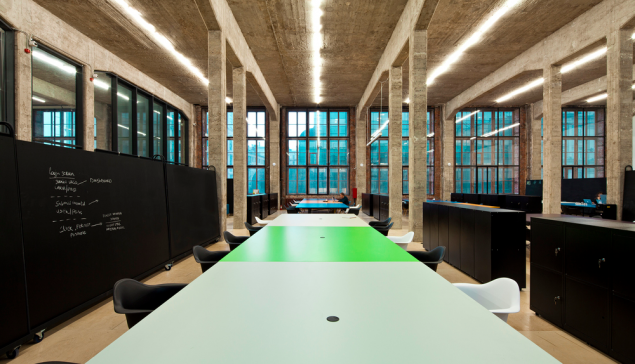
It is no coincidence dudes called Tver Broadway. One can only imagine what a beauty here comes the night. Hanging outside the window is decorated with garlands Telegraph on holidays and weekends only.
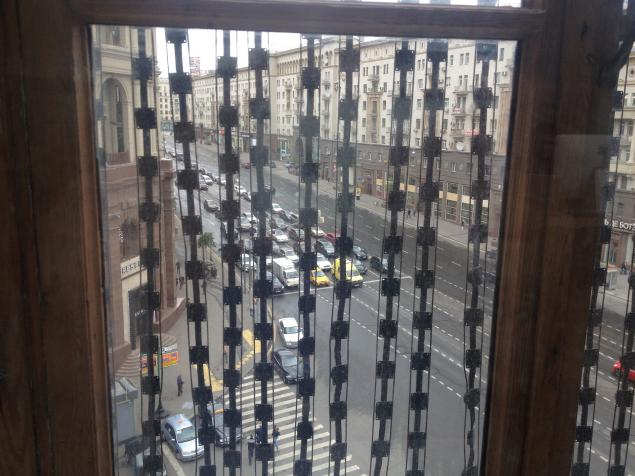
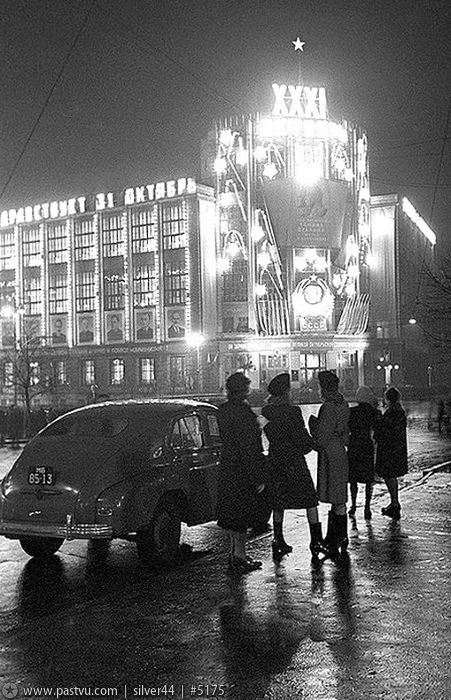
Also here coworking conference room. Just a space to 900 square meters (!) For fashion events in the city center.

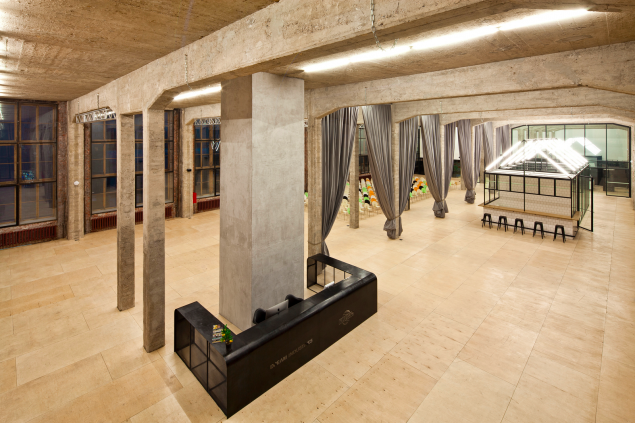
Well, back to our hike.
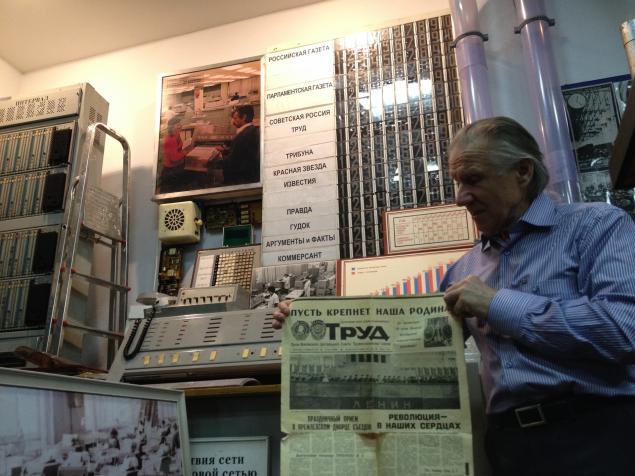
The device in the photo IMHO simply outstanding. This all-union system print newspapers. She holds a printer, scanner, modem, photoshop and a lot of things on the little things.
Designed just for one function - to the Soviet Union throughout the morning lying on the shelves of fresh issues of major newspapers. What in Brest that in Vladivostok.
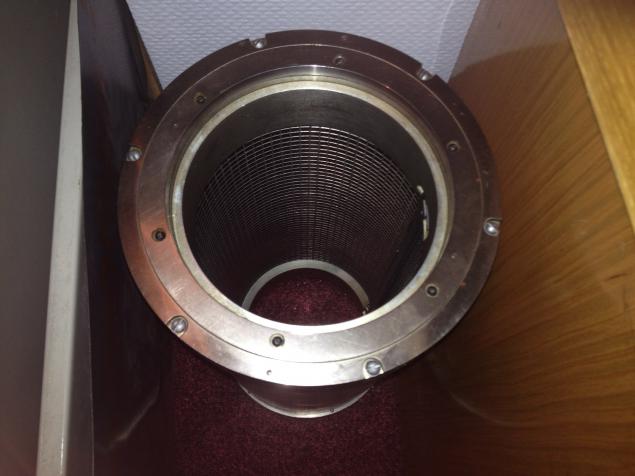
The paper is loaded into the drum is facing up, the drum is inserted into the machine.
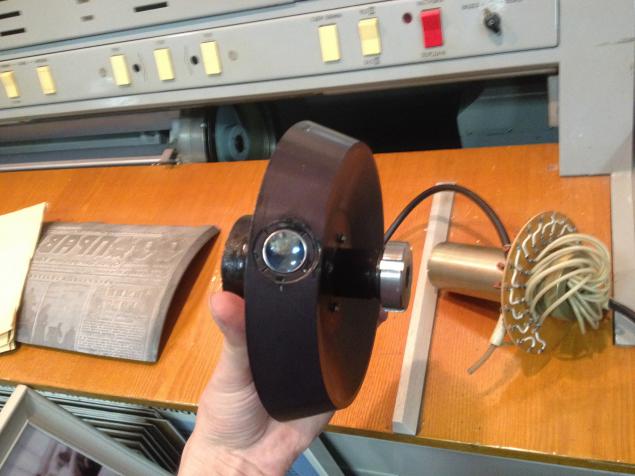
In the drum starts rotating scanner and line scans newspaper. Then, sobctsvennym channel transmits data at the same Soup nationwide. Behind a prominent place in the car where to insert the drum.
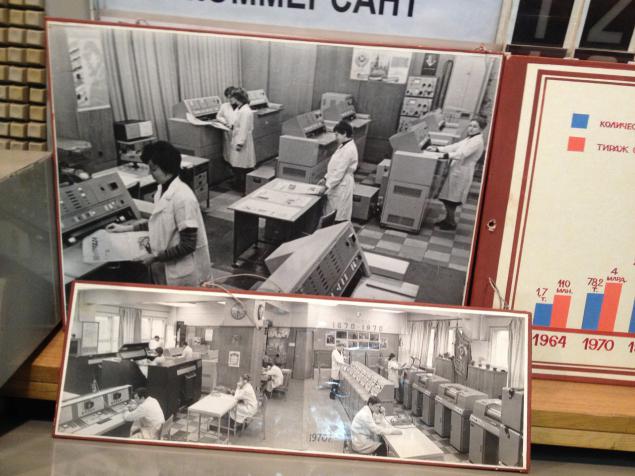
The system works is not fast, so use whole machine rooms with dozens of operators.
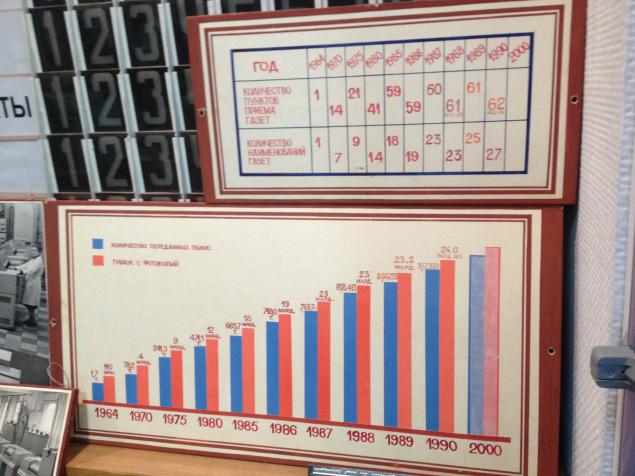
The system worked until 2008, starting from 2000. The signal is transmitted through the modulation signal of the first channel.
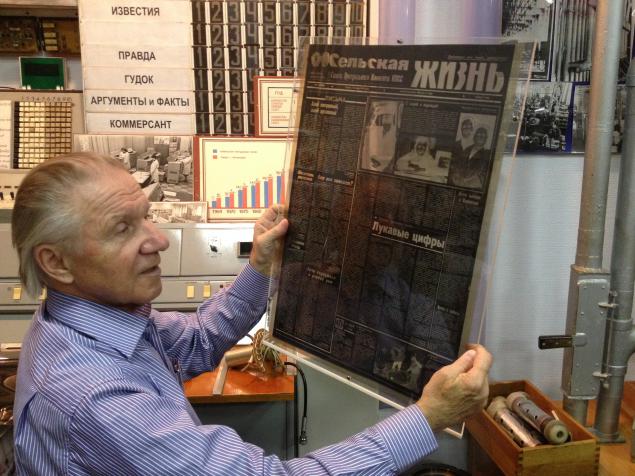
At the exit of the car in Vladivostok received here such negative film.

With negative himsposobom etched plate, which is already printed edition.
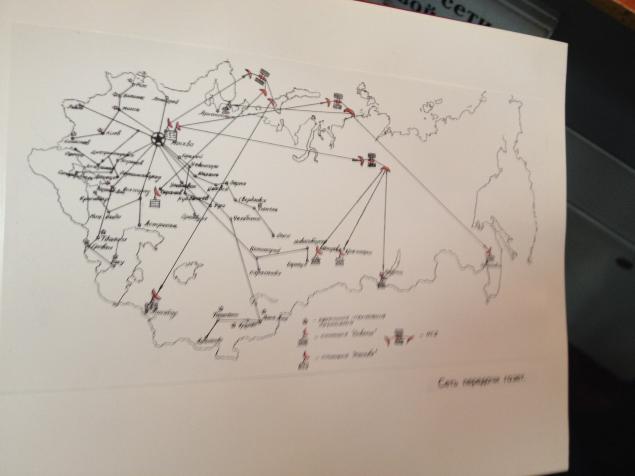
Self control - this is only a small part of the system.
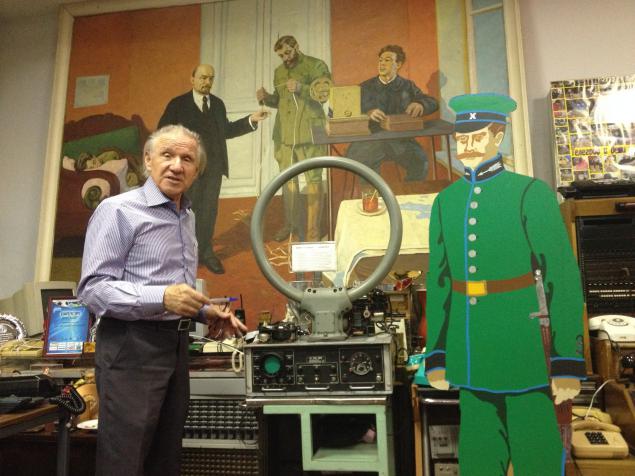
Here's another one of its devices - receiver comparator. It serves as a simple function - sync system time signal hits. You know those hooters at midnight on the radio? So, this civil signal for general purposes. Industrial time signals are transmitted on different frequencies around the clock.
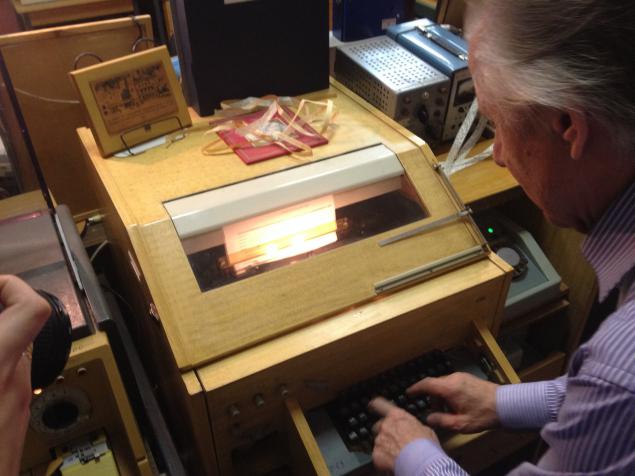
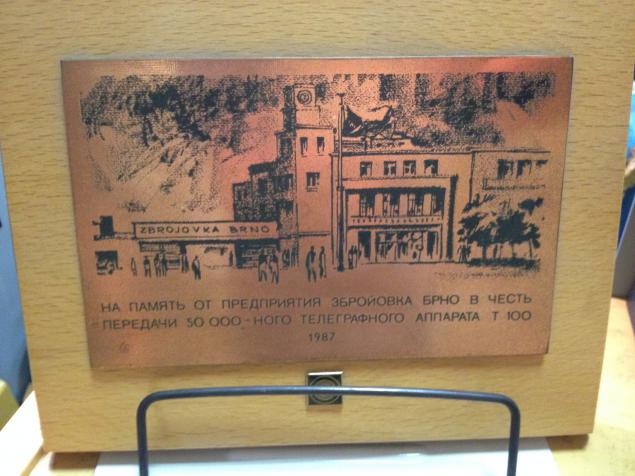
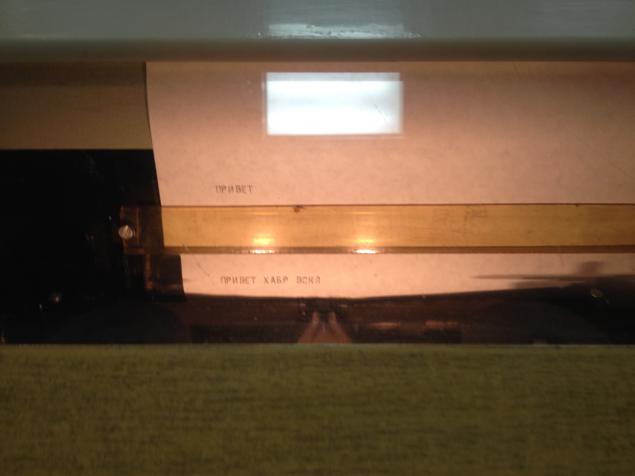
And here, by the way, telex, for which she worked herself Olga Shelest.)
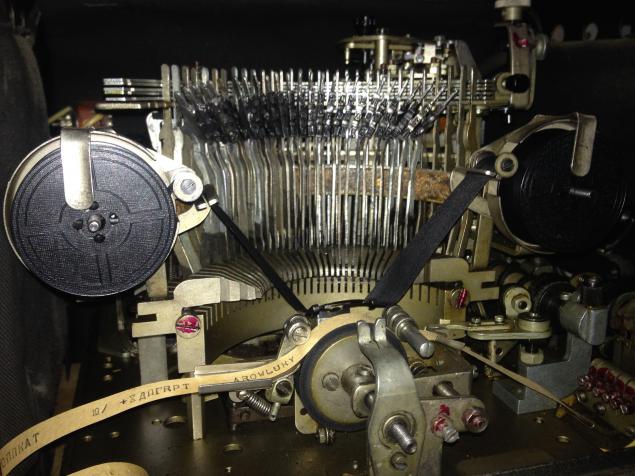
And this old telex with an interesting keyboard with three registers and two Shift key on your keyboard.
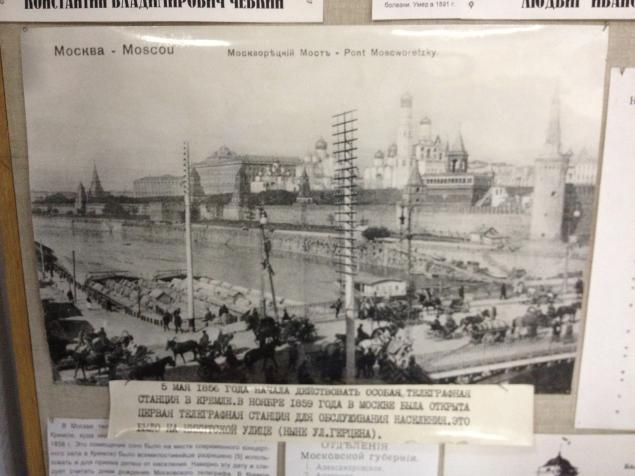
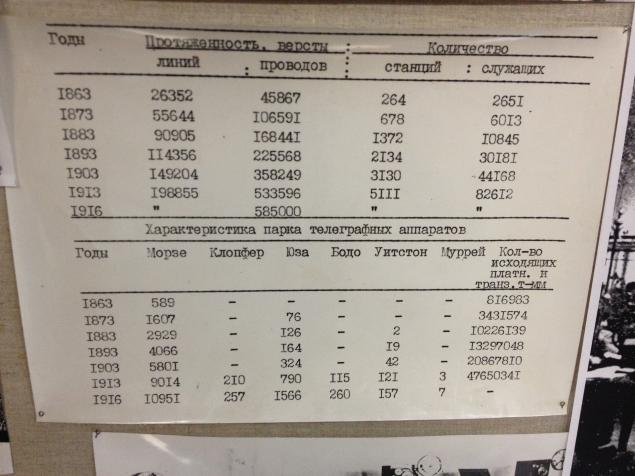
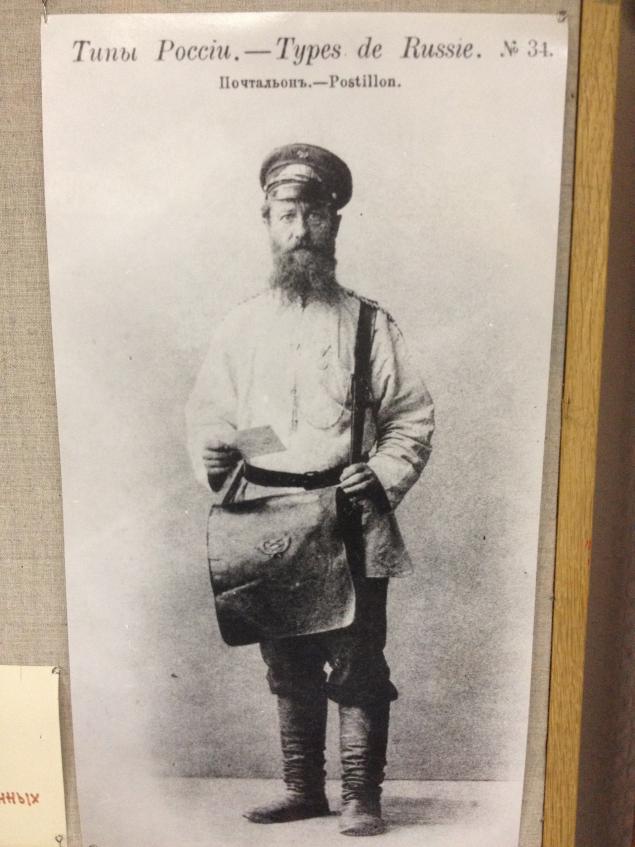
A bit of history.
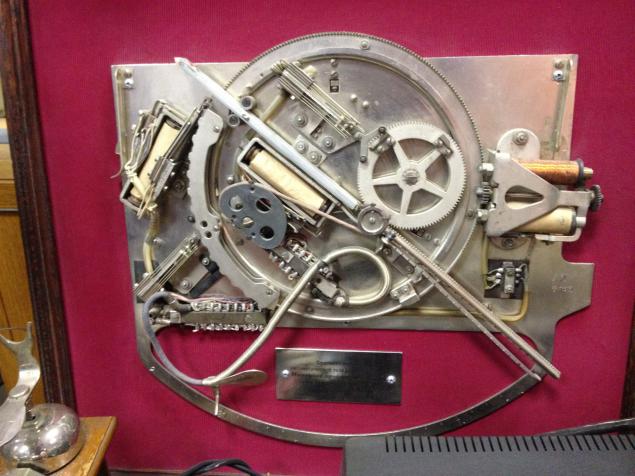
Incidentally, the first relay of the first exchanges in Moscow, 1930.
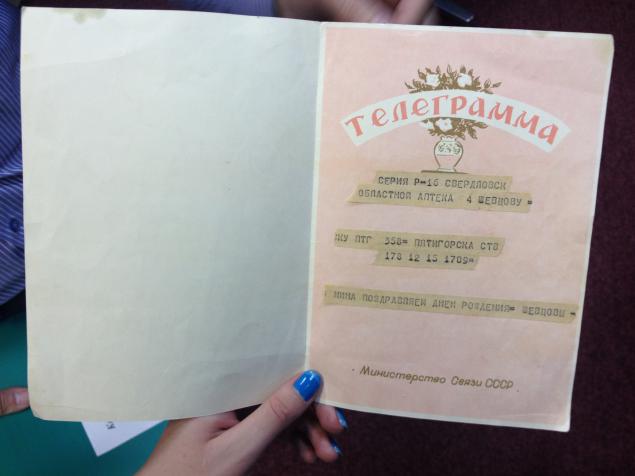
And here is the most interesting. By law, all cables must be destroyed after three months of storage to ensure the secrecy of correspondence, so they almost did not survive at all. But the museum has a collection of pre-revolutionary telegrams seized censorship (we only showed them the pictures). Reading them, you realize how naive our society was only a hundred years ago. C on the other hand, can not see any difference with today's twitter.
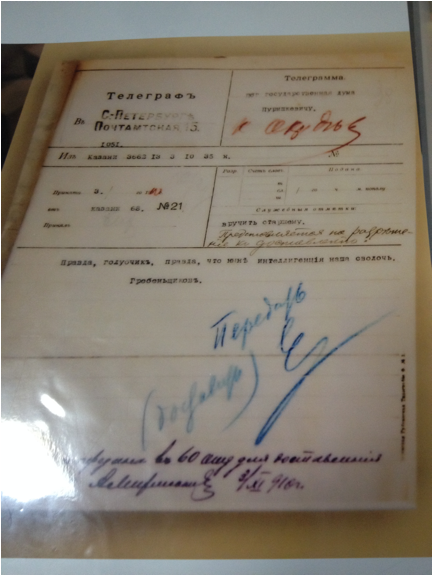
"Intellectuals, then our - bastard!»

"You bastard, where the petition?»
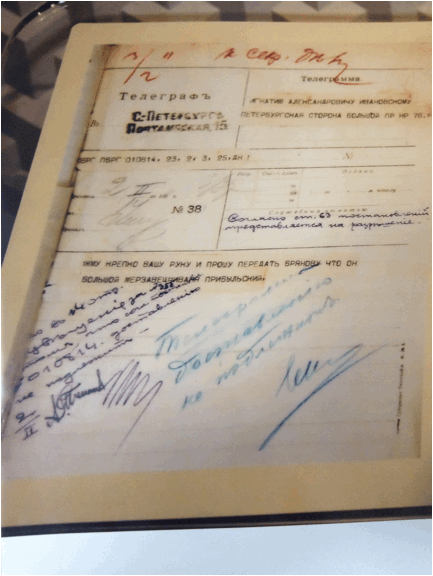
"Big bastard»
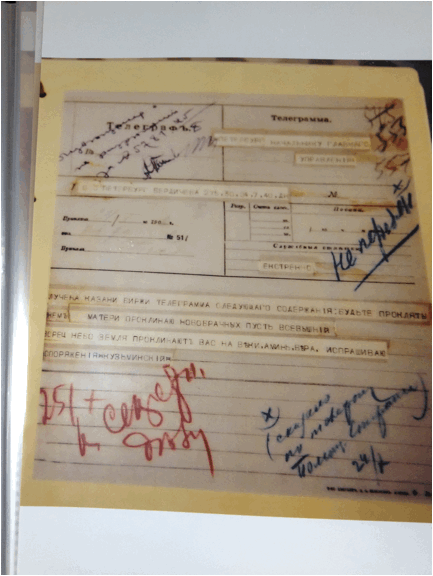
"Damn Suite»

"Torment electric sound." Classic!
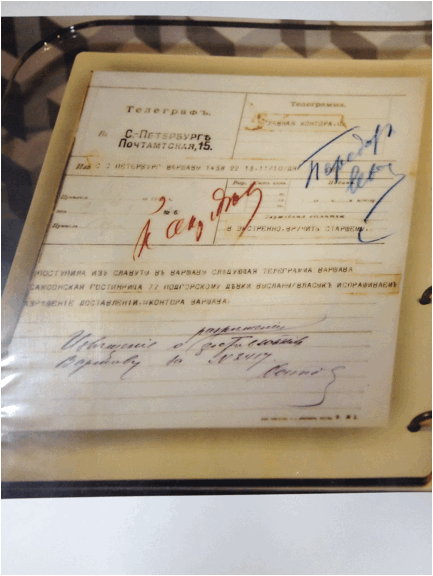
"Podgorski girls expelled»

"Christ is Risen - coffers are empty." Give to the emperor that the British brick gun is not clean.

"Herbs, topis, hang!»
And here is a monument to our waste. The last remaining section of the clock above the entrance to the telegraph. Vladimir just picked up a section on the dump and restore it.
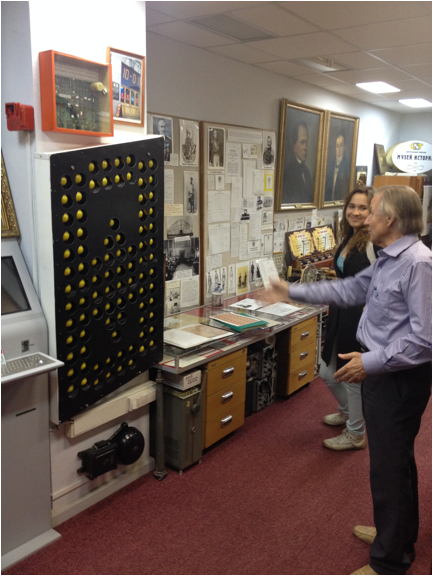
I had to rebuild and control circuitry. But to include the device while strictly prohibit firefighters who know the museum and enthusiasm Vladimir Zukor, so give (or not give) permission for each elektrichecky device.
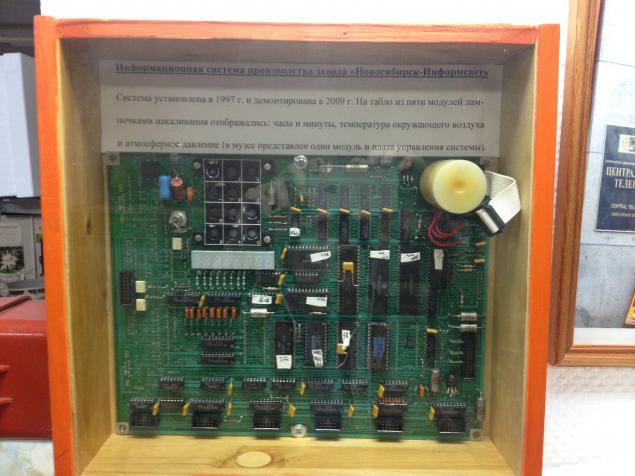
Just imagine how many would now be worth the watch, put them up for auction. And they do not even stolen, but simply thrown in the trash.
That's it! Thanks to the Director of the museum for an interesting tour, and Albert Valiullina (DI Telegraph) for the invitation.
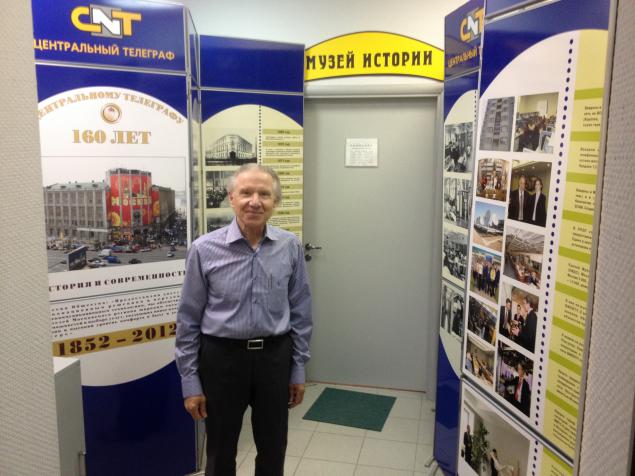
By the way, I told Vladimir of Habré, and he asked the question to ask - do not want to go there habrovchane on such a tour? But over time the museum more than ten people will not fit, so Albert proposed act easier - to make an exhibition of museum exhibits directly in coworking. Take the time to vote! Would you like to visit the Museum of the Central Telegraph Office?
| I want to hike! |
| Better to do the show. |
| I have enough and reportage with normal photos. Only registered users can vote in polls. Sign , please. 53 people have voted. 13 people abstained. Source: habrahabr.ru/company/dreamindustries/blog/228589/ |
